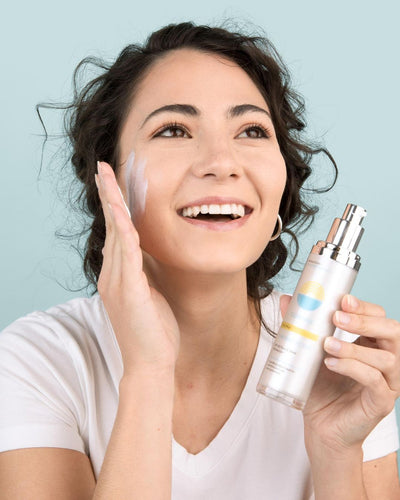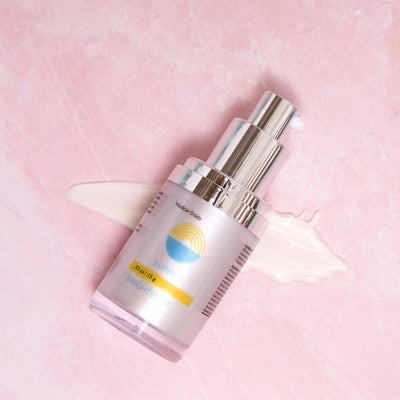Overview
There is no question that we want what’s best for our skin regarding skincare products. We only get one skin, so we have to take care of it! How do we find the best skincare products with so many products on the market?
The answer is medical-grade skincare ingredients.
The term “medical grade” indicates a product held to a higher standard than products found at your local drugstore. For a product to be considered medical grade, it must meet specific criteria set by the FDA.
This article’s information will help you understand the difference between medical-grade and over-the-counter skincare products.
You will also learn about some of the most common medical-grade skincare ingredients and what they can do for your skin type.
What Are Medical-Grade Skincare Ingredients?
Products using medical-grade skincare ingredients contain higher concentrations of active ingredients than OTC products. This potency means that they are more effective in treating skin conditions and can provide visible results.
The FDA regulates medical-grade skincare products and they are only available through licensed medical professionals, dermatologists, or specialist websites.
The problem with OTC skincare products is that they don’t always have the same quality or strength as medical-grade skincare products.
The packaging and marketing for OTC products often look similar to medical-grade skincare products, but the formulation is not the same.
You might use the product for a long time without seeing results, or you could even experience adverse effects from using a product with weaker ingredients.
Medical-grade skincare ingredients are backed by clinical research and are proven to be effective in improving the appearance of the skin.
They are often more expensive than OTC skincare products.
There are many different medical-grade skincare ingredients currently in use, and each one has its unique benefits.
Most Common Medical Grade Ingredients
Below are some of the medical-grade ingredients you’ll typically find in skincare products.
Vitamin A or Retinol
Retinoids reduce the appearance of wrinkles, fine lines, and dark spots by helping to produce collagen. They also can reverse damage from UV exposure and treat acne breakouts.
Retinoids are a class of compounds derived from vitamin A. They are some of the most well-researched and proven anti-aging ingredients. Retinoids help to remove fine lines, wrinkles, and hyperpigmentation.
Vitamin C or Ascorbic Acid
Vitamin C scavenges free radicals that cause premature aging, brightening skin tone by inhibiting melanin production.
This vitamin is known to protect the skin from sun damage. Some use it to treat areas of discoloration and acne as well.
Glycolic Acid
Glycolic acid is an alpha hydroxy acid (AHA) that dissolves the “glue” holding dead skin cells together. This process allows for better cell turnover, brightening skin tone and texture.
The body reacts to glycolic acid by increasing collagen production, resulting in firmer skin. Glycolic acid is an alpha-hydroxy acid (AHA) that helps exfoliate the skin, improve the appearance of acne scars, and brighten the skin.
Hyaluronic Acid
Hyaluronic acid is a moisture-binder that helps keep skin plump. The acid hydrates the skin and provides a youthful glow on our skin. Hyaluronic acid is a humectant, meaning it attracts water to the skin.
This ingredient is found naturally in the body and is known to hold 1000x its weight in water. Because of this, it acts as a hydration treatment, with the ability to plump and fill in lines.
Niacinamide
Niacinamide is a variety of vitamin B3 that brightens skin tone, improves elasticity, and reduces inflammation.
The benefit of this form of Vitamin B is that it helps retain and build up keratin which keeps the skin healthy. Aside from that, it prevents redness and flushing as well.
Peptides
Peptides are chains of amino acids that stimulate collagen production and help to repair the damage.
The body reacts to peptides as injured tissue, sending collagen to repair the area. Peptides help to remove fine lines and wrinkles by plumping up the skin.
Ferulic Acid
This ingredient boosts the effectiveness of other antioxidants in the skin and prevents signs of aging and wrinkles. The body reacts to ferulic acid by producing more collagen, which gives the skin a firmer and youthful appearance.
Kojic Acid
This fungus-based acid can fade dark spots, repair sun damage, and kill the bacteria that cause acne. The body reacts to kojic acid by producing more melanin.
Kojic acid is a powerful skin-lightening ingredient that can help to improve the appearance of hyperpigmentation and dark spots.
Resveratrol
This ingredient is found in grapes and wine and has anti-inflammatory, antioxidant, and antimicrobial properties.
Resveratrol can help to protect the skin from damage caused by UV radiation. The body reacts to resveratrol by producing more collagen.
Vitamin E
Also called tocopherol, this vitamin is a powerful antioxidant that can reduce sun damage. It also retains skin moisture. The body reacts to vitamin E the same way it would to a burn, so it can help heal scars.
Zinc Oxide
This ingredient is a mineral that reflects UV rays and protects the skin from damage. It is often used in sunscreens because it provides broad-spectrum protection against UVA and UVB rays.
Tranexamic Acid
This ingredient is an amino acid that helps to brighten the skin and reduce the appearance of dark spots. It also has anti-inflammatory properties.
Tranexamic acid changes how melanin is produced in the skin, resulting in a more even skin tone.
Arbutin
This ingredient comes from bearberry plants and can help to brighten the skin and reduce the appearance of dark spots. Arbutin works by inhibiting melanin production.
The body reacts to arbutin by producing more collagen, which gives the skin a firmer and youthful appearance.
Arbutin can make scars less noticeable.
Lactic Acid
Lactic acid is an exfoliating ingredient that can improve the appearance of fine lines, wrinkles, and dark spots.
The body reacts to lactic acid by increasing collagen production, resulting in firmer skin. Lactic acid is an alpha-hydroxy acid (AHA) that can also help to reduce the appearance of acne scars.
Problematic Over-the-Counter (OTC) Skincare Ingredients
OTC skincare products contain some ingredients that are dangerous or ineffective. These ingredients are common in skincare products but they're not regulated by the FDA.
Sodium Lauryl Sulfate (SLS)
SLS is a common ingredient in skincare and cleaning products. It’s an emulsifier that helps to create a foamy texture.
However, SLS is also a skin irritant. It can cause dryness, redness, and scaling. In some cases, it may also lead to hair loss.
Ethanolamines
Ethanolamines are chemicals that help to adjust the pH of a product. They act as emulsifiers and surfactants.
However, ethanolamines can be toxic when absorbed through the skin. Links to cancer, liver damage, and reproductive toxicity exist.
Butylated hydroxyanisole (BHA) and butylated hydroxytoluene (BHT)
BHA and BHT are common preservatives in skincare products. They’re used to extend the shelf life by preventing the growth of bacteria and fungi.
BHA and BHT absorb through the skin. They’ve been linked to endocrine disruptors and may also be carcinogenic.
Triclosan
Triclosan is an antimicrobial agent used in skincare products to kill bacteria in some toothpaste and hand soaps.
Triclosan can also kill good bacteria on the skin. It’s linked to cancer, hormone disruption, and immune system effects.
Parabens
Parabens are a preservative used in skincare products to prevent the growth of bacteria.
However, parabens can mimic estrogen in the body. They may cause breast cancer and reproductive toxicity.
Aluminum
This is a toxic metal that has been linked to breast cancer, Alzheimer’s disease, and kidney problems.
Aluminum compounds are common in cosmetic products as well. They’re used as colorants, thickeners, and opacifiers.
Phthalates
Phthalates are a plasticizer used in skincare products to improve texture and flexibility.
Phthalates absorb through the skin. They can cause endocrine disruption, reproductive toxicity, and cancer.
PEG (Polyethylene Glycol)
This ingredient acts as a thickener, emulsifier, and solvent.
PEGs may contain 1,4-dioxane, which is a known carcinogen. PEGs can also affect the penetration of other chemicals through the skin.
Formaldehyde
Formaldehyde is a preservative used in skincare products to extend shelf life.
Formaldehyde is a known carcinogen. It can also create irritation and allergic reactions.
Coal Tar
Coal tar is a byproduct of coal used as a colorant and preservative in skincare products.
Coal tar is a known carcinogen. It may also cause skin irritation, dryness, and scaling.
Medical-grade skin care products don’t have these problematic ingredients. They contain safer ingredients backed by scientific research.
As a result, medical-grade skincare products are more likely to be effective in treating skin concerns.
So, if you’re looking for results-driven skincare, medical-grade ingredients are the way to go.
Conclusion
Medical-grade skincare ingredients are clinically proven to provide better results than OTC products. They are typically more concentrated and work to improve the appearance of skin by addressing different issues such as dark spots, wrinkles, and sun damage.
The body reacts differently to medical-grade ingredients than OTC products, often producing more collagen or melanin in response. If you are searching for a way to improve your skin’s appearance, talk to your dermatologist about medical-grade skincare products.



